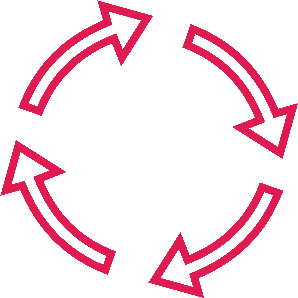Design Thinking for Marketers: The Value of Iteration
What are the components of your marketing plan? It likely describes your customers, has a unique selling proposition, lists the marketing channels, promotional offers, and brand messaging. It may have more – or less – than these components, but they are similar components in many marketing plans. Another common feature is that it’s an annual marketing plan. Once it’s written, it’s used for the rest of the year. It’s time for marketers to consider an iterative approach to marketing.
Iteration in design thinking for Marketers is a cyclic process of testing, analyzing, reviewing, and making frequent changes based on results. This is contrary to the static marketing plan that guides a business through a fiscal year. The approach is understandable. The marketing department has a budget allocated to them for twelve months and needs to make decisions about how to spend it. There are also business objectives the company intends to achieve, and marketing needs to define how they will help for the upcoming year.
But things change over a year and events may happen that were not foreseen – such as COVID19 – that change the way the business operates. Customer preferences also evolve. The way someone wants to communicate with a brand may change later in the year when a new channel launches and surprises everyone with it’s popularity. An unforeseen competitor may also come to market.
This shows the value of an iterative process. The intent with iterations is to get closer to the final product with each test. Each time you test, you make minor changes based on the feedback from the audience. When you test and learn quickly from a marketing campaign, you save time from extensive planning on an idea that may not even speak to your audience. This is also where you discover surprises from your test audience that you may not have considered without iterations.
This is a simple process that steps too far away from standard procedures. Let’s use the example of a white paper you’re developing as an asset to acquire leads. Rather than writing the paper and immediately launching a campaign, you can test components of it. Take highlights from a rough draft and test them on social media. What overall message gets the most response from your audience? Doing this helps you understand what will ultimately resonate the most with your audience before finalizing the paper. You could also send a short snippet to a segment of your email subscribers and A/B test what they respond to. By putting a little time in testing your ideas upfront, you save time and money on campaigns that may not work.
The key is to not design for perfection – at least, not at the start. Yes, your final white paper should be perfect – in concepts, images, copy, grammar, etc.. The initial goal is to get something out there quickly for a response. The quicker you test, the more you learn, and the better your final campaigns will be. That’s something even the most traditional departments can get behind.
Check out part 2 and part 3 of the Design Thinking for Marketers blog series!




